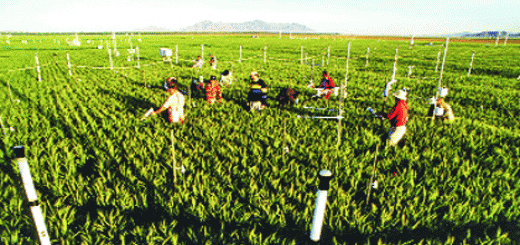Eggshells Help Hatch A New Idea For Packaging
Nano bits of eggshells let two biodegradable plastics work better together.
An old proverb says you’ve got to crack a few eggs to make an omelet. Most people then toss those eggshells out. Indeed, a lot of eggshells end up in landfills, observes Boniface Tiimob. He’s a materials scientist and graduate student at Tuskegee University in Alabama. But now, he says, there’s a promising new use for that waste. Those shells can be recycled into packaging for more eggs or other goods.
Vijaya Rangari is a materials scientist, also at Tuskegee. He and Tiimob got their idea when the National Science Foundation challenged researchers to find ways to put wastes to good use. The team even decided to make its new packaging biodegradable. In other words, they designed it to break down into safe materials over a fairly short period. Then nature can recycle those breakdown products into new resources.
For their design, the team members drew on their chemistry knowledge and did some homework. For instance, they studied some earlier work on biodegradable polymers. Polymers are made from long chains of repeating groups of atoms. Two biodegradable ones are PLA and PBAT. PLA, or polylactic acid, comes from cornstarch. On its own, it’s strong but very brittle. “It doesn’t have flexibility at all,” Tiimob says. PBAT — short for poly (butylene adipate-co-terephthalate) — comes from petroleum. It’s very flexible but not very strong.
One earlier study combined calcium carbonate with PLA. This allowed the plastic to flex a bit more before it broke. Another study showed that PLA was also more flexible with some PBAT added to it. But the two plastics generally don’t mix well, Rangari notes.
He and Tiimob believed they could build upon those studies. They reasoned that calcium carbonate could help the polymers blend, at the same time adding flexibility. Eggshells, as they are mostly calcium carbonate, could be a good source, Rangari and Tiimob figured. So they mixed bits of eggshell in with the plastics. Tiny bits.
The researchers chose nano-scale particles because they would have lots ofsurface area. Rangari’s group had already figured out how to make the nanoparticles. First, they ground clean eggshells into a fine powder. That process was a lot like grinding wheat into flour. Next, they blasted the fine powder withultrasonic waves. These are energy waves that have a frequency higher than audible sound. The force broke the powder down even further into teeny, tiny bits. Each was shaped like a stacked deck of cards and was 10 nanometers across. (A human hair is more than 350,000 times as thick.)
The team blended the eggshell nanoparticles into various mixtures of PLA and PBAT. The best performance came from a mix that was about 0.5 percent eggshell. The rest of it was seven parts of PBAT to every three parts of PLA. The result was about seven times more flexible than other biodegradable polymer blends, Rangari said. The plastic was also strong enough for most packaging uses.
The researchers described their work on March 16 in San Diego at the spring national meeting of the American Chemical Society.
What’s next?
The team is now looking into what happens to the eggshell-plastic blend in soil. They especially want to see how the calcium carbonate interacts with plants, Tiimob says. The carbonate should improve the soil and lower its acidity. The calcium should help tomatoes and some other plants that need a lot of that nutrient as their fruit grows.
The scientists are even working on possible medical uses for eggshell nanoparticles. For example, they might make better dental fillings or help heal bone injuries, Rangari says.
Jinwen Zhang is a materials scientist at Washington State University in Pullman. He has worked with PBAT, PLA and calcium carbonate. Zhang thinks the Tuskegee team’s idea of using eggshell nanoparticles could prove very useful.
“The group should be commended for thinking to utilize the eggshell,” says Zhang. “This way, you turn waste into something that may be useful.”
But making a good, biodegradable plastic is only half the challenge, says Susan Selke. She is a chemical and packaging engineer at Michigan State University, in East Lansing, and not involved with the new plastic. The biodegradable plastic must still get to a compost system, she says. By that she means there should be a way for people to separate it and certain food wastes from other types of trash. Then these materials should go to a place where microbes will have enough oxygen and moisture to break them down.
“If these [plastics] are going to go to a composting system, then being biodegradable makes sense,” Selke says.
“If they are going to go to a landfill, it doesn’t make sense,” because they’ll get little chance to degrade. The plastic has to be designed for how it will be used — and disposed of.














Recent Comments